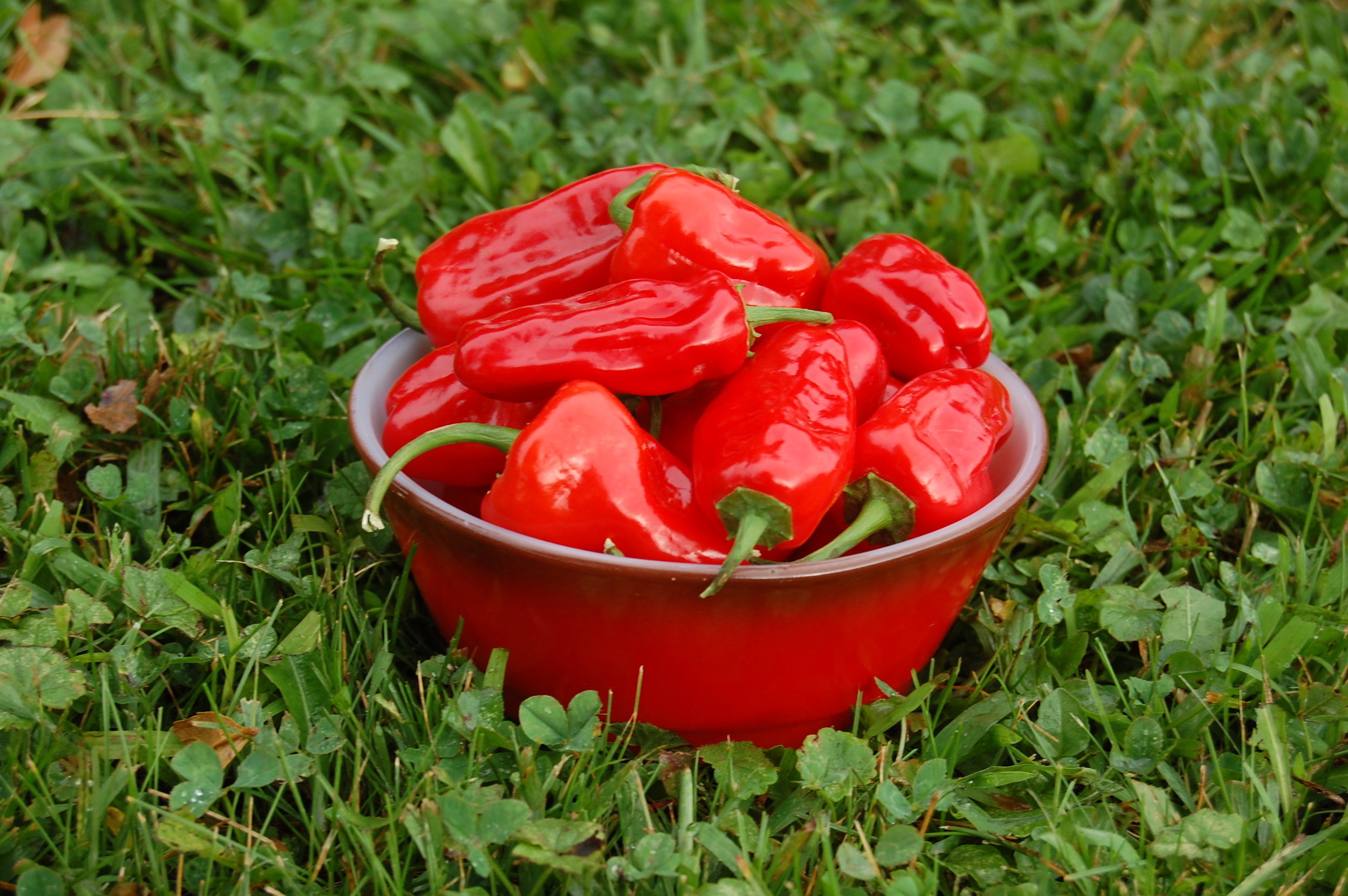 The ‘Hinkelhatz’ pepper was first noted as an ingredient for pepper sauces in the 1848 Pennsylvania Dutch cookbook, Die Geschickte Hausfrau. Seed Savers Exchange member, William Woys Weaver, translated and republished the book under the title Sauerkraut Yankee in 1983. According to Weaver, the pepper was rarely eaten raw by the Pennsylvania Dutch, instead it was favored for colorful pickles and flavorful sauces.
The ‘Hinkelhatz’ pepper was first noted as an ingredient for pepper sauces in the 1848 Pennsylvania Dutch cookbook, Die Geschickte Hausfrau. Seed Savers Exchange member, William Woys Weaver, translated and republished the book under the title Sauerkraut Yankee in 1983. According to Weaver, the pepper was rarely eaten raw by the Pennsylvania Dutch, instead it was favored for colorful pickles and flavorful sauces.
Weaver inherited the seeds for ‘Hinkelhatz’ as a part of his late grandfather’s seed collection. According to his grandmother, the peppers first arrived in her kitchen around 1935. Because they were too spicy for her, she made them into a sauce for the boys – unknowingly continuing the tradition of making hot sauce with the pepper.
The ‘Hinkelhatz’ pepper has been cultivated since at least the 1880s by the Pennsylvania Dutch. These settlers were a unique group of immigrants from southwestern Germany and Switzerland who established themselves in Pennsylvania during the 17th and 18th centuries. The Pennsylvania Dutch still have strong cultural ties to the original settlements throughout Pennsylvania and adjacent communities, with a rich food heritage that still includes the ‘Hinkelhatz’ pepper.
HINKELHATZ CROCK PICKLE - reprinted with permission from William Woys Weaver's book, Sauerkraut Yankee
This traditional Pennsylvania Dutch pickle must have enough Hinkelhatz pepper in it to give it a spicy flavor. Vinegar often modifies the heat of hot peppers, so if in doubt, put whole seeded pods in the pickle and taste it often for the first day or two. If it seems to be getting too hot, remove the pods. If it is not hot enough, add more.
Yield: Approximately 2 quarts (2 liters)
1 large bunch fresh dill, preferably with flower heads (at least 4 to 5 large flower heads)
12 cloves of garlic cut in half lengthwise
1 tablespoon mustard seed
10 fresh bay leaves
4 tablespoons coriander seeds
2 teaspoons black peppercorns
1 tablespoon allspice
1 to 2 tablespoons chopped Hinkelhatz peppers, or whole seeded pods to taste
8 ounces (250g) cauliflower broken into small florets
8 ounces (250g) sliced green tomato
8 ounces (250g) sliced baby cucumbers
8 ounces (250g) carrot, pared and cut diagonally into paper thin slices
8 ounces (250g) sweet peppers seeded and cut into irregular pieces (green or red, preferably red)
1 ½ quarts (1 ½ liters) spring water
2 cups (500ml) white wine vinegar or 1 cup garlic flavored vinegar plus 1 cup coriander flavored vinegar
1/3 cup (90g) pickling salt
Place half the dill in the bottom of a non-reactive crock or large sanitized glass jar. Combine all the ingredients in a deep work bowl, and when thoroughly mixed, pour into a crock or glass preserve jar. Heat the spring water, vinegar, and salt in a non-reactive preserving pan and bring to a full boil for 3 minutes. Pour this over the vegetables, place the remaining dill on top and cover. Once cool, set aside in a refrigerator or cool pantry to marinate 3 weeks before using. Check the pickle from time to time to adjust the heat of the peppers. Add more ripe peppers if it does not seem hot enough.
Today, the ‘Hinkelhatz’ pepper is available in the Seed Savers catalog, having gained attention for its flavor, compact habit, and prolific production. Slow Food USA features this pepper in its ‘Ark of Taste’ because of its importance as a part of America’s food heritage, and Weaver discusses it in his book, Heirloom Vegetable Gardening. Help preserve a unique heirloom variety and grow some ‘Hinkelhatz!'
























